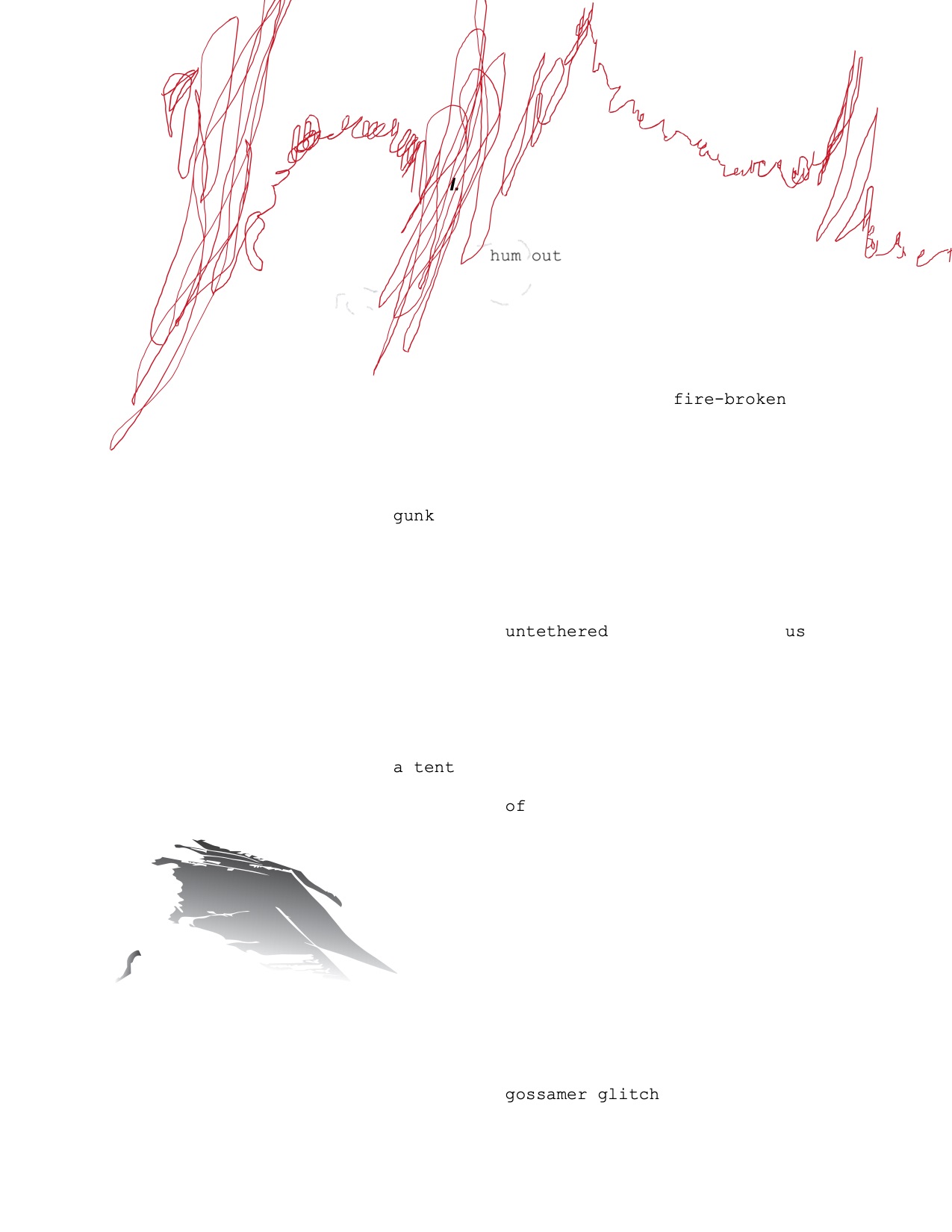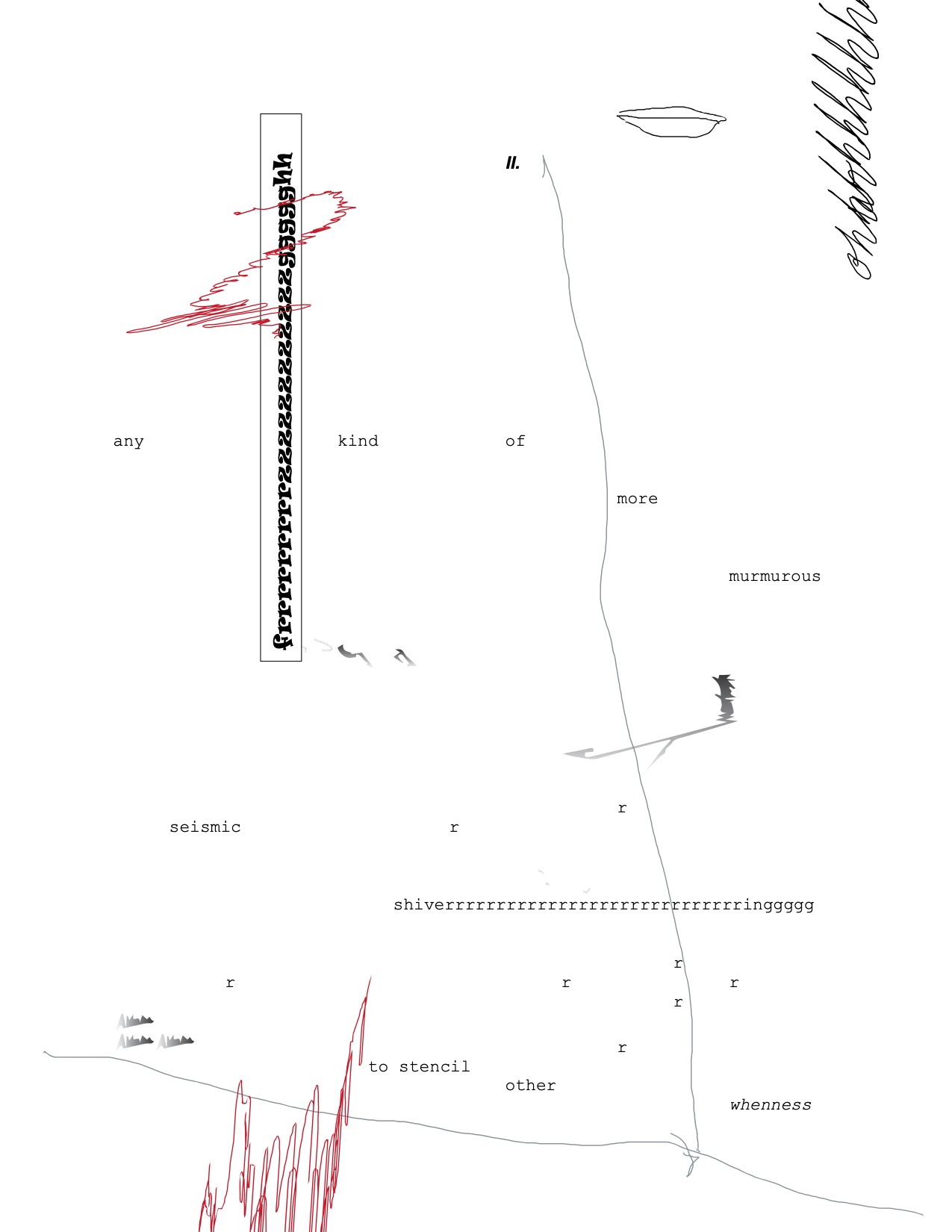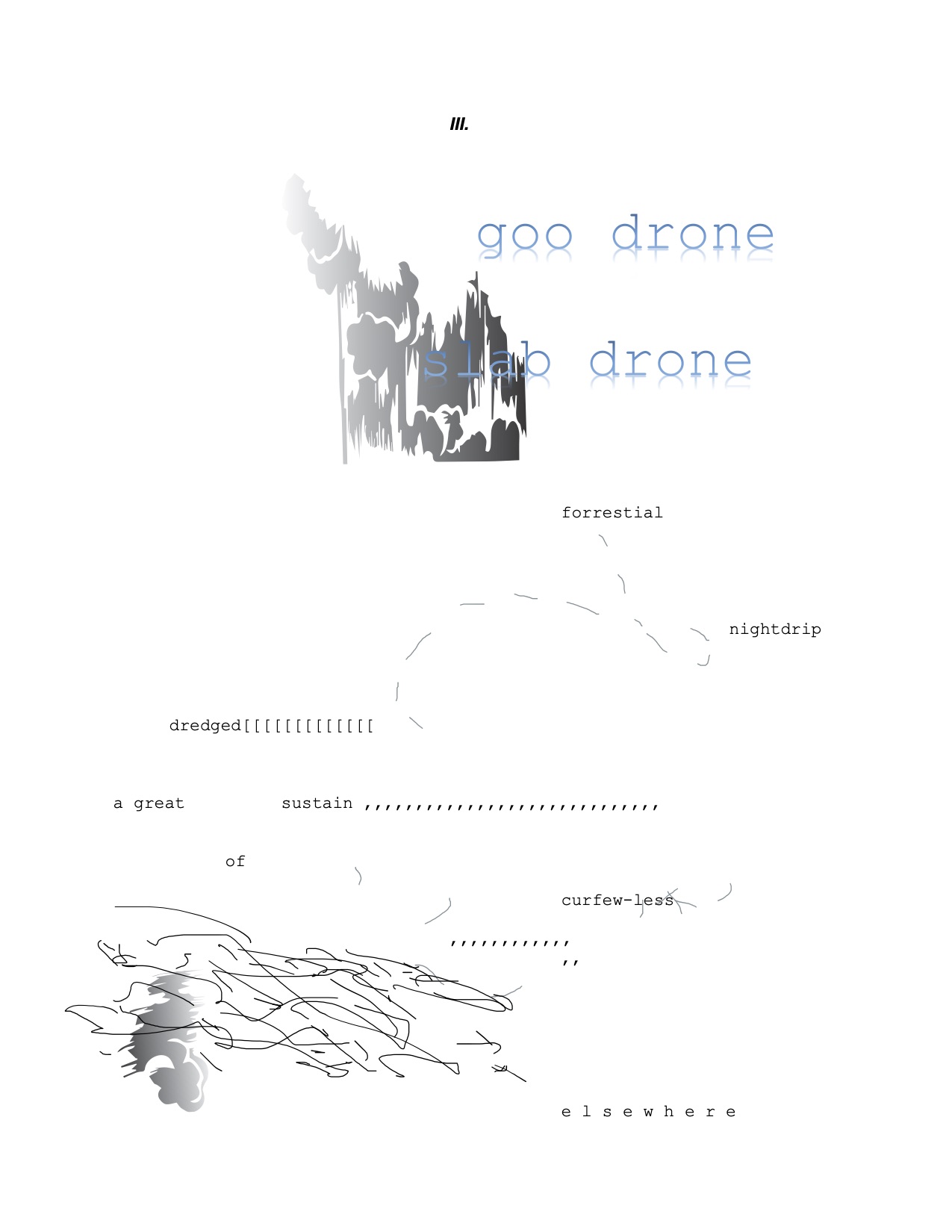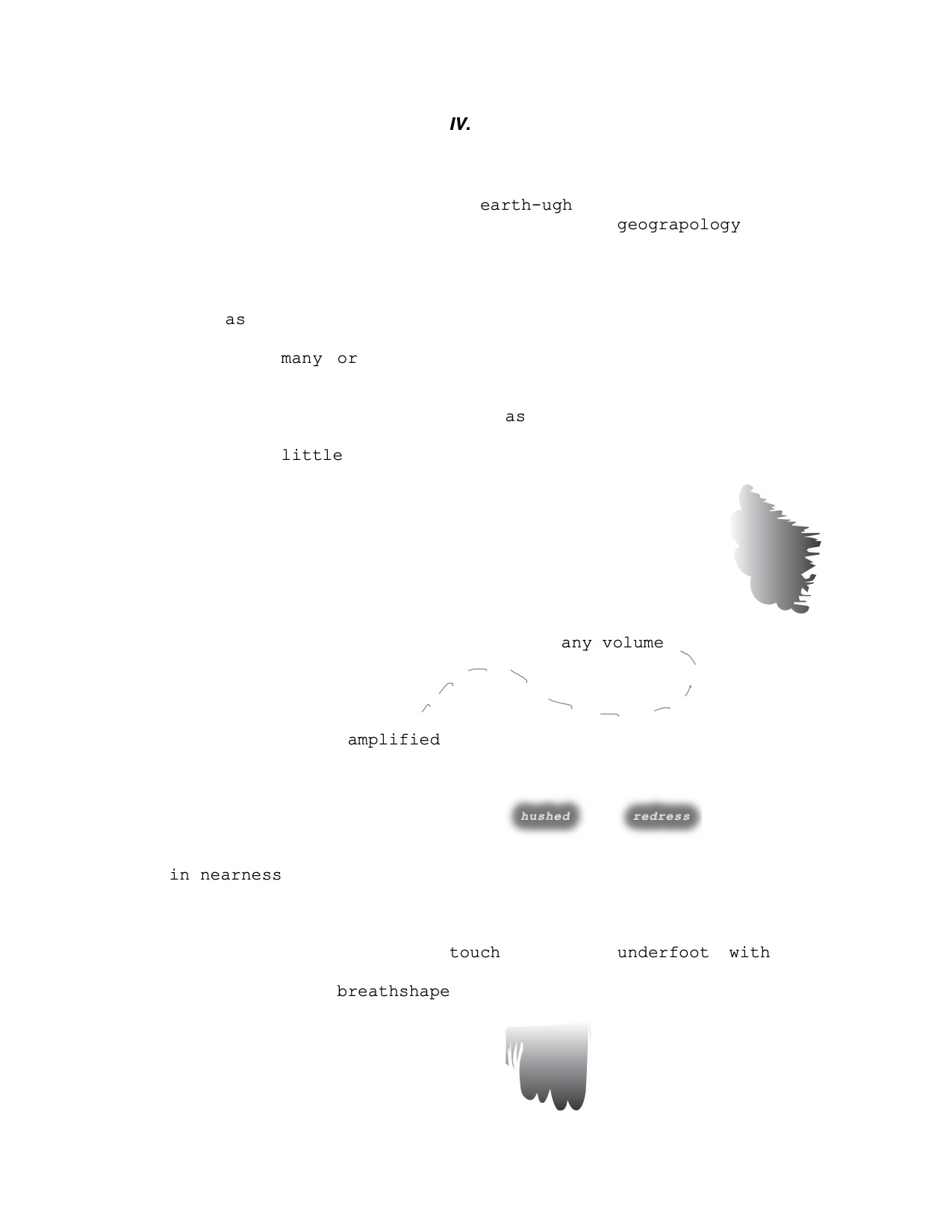Geograpologies
Share:
To Get There, Make a Not-here
We started with a series of questions:
How could we make a public space with sound?
How could the making of the sound itself be more public?
A drone? A hum? A murmur?
An action that could potentially (and always) involve any, or all.
We were thinking about the late Pauline Oliveros—a lover of elephants, animals who hear through their feet. Maybe we could become more elephant, less human? Maybe we could send sound across terrain to produce collective communication: sonorous activity to remap space.
What would an invitation to make sound that produces a public space look like?
Maybe this could start with a reframing of space, geography, ecology itself.
We turned to our modes of communication—language, music, line, movement—and asked what a different relationship to our planet could produce.
Where would it start?
To begin with, we needed a new word, a neologism to wrestle us out of our standard 2022 English (a time high on updates and vitriol, but low on resonance); a word to carve out terrain of another condition.
Geograpologies
Intimate, but indicating a massive scale shift. A word filled with seismic shivers, whose shared acoustic experience might rechart, make space to acknowledge atrocity/error, but mark new time.
A set of performance scores to be interpreted and used freely.
Performance Notes
Anyone is a performer.
Sonically, any number of sounds or instruments produced by performers in any manner or style can be employed.
Each piece can be performed for a time ranging from 1 minute to 1 hour. Pieces can also be performed for a 12-hour period.
Performers should consider the potential for collective spatial vibrations—i.e., sonic actions that travel through and across the geography of a single space—and attune to how implementing the work could encourage a shift in space and ground.
Drawn lines and geological hunks** should be interpreted freely by the performer and can be read variously. For example:
- map-like—as instructions for movement, either on the page or throughout space
- tonally—in terms of pressure, force, intensity
- durationally—as to express a measure of time
- locationally— in terms of choreographing persons, instruments, or sounds across a space
Likewise, language too can be used:
- instructionally, as a literal indication of what is to be done
- as a set of actions or guides
- narratively
Variation in and fusion of genre is encouraged: drone metal, Detroit techno, freak folk, underground hip-hop, free jazz, contemporary classical, et al. But no musical experience is required. Relish a single word or two. Get stuck there; build out. Find pleasure in the poetic.
**A note on geological hunks.
Where would a geograpology begin?
Anywhere, anytime, really, but one temporal point of reference is 1507. A moment in time that signaled a shift in vision: the first time that “America” is named on a map, though the land—and the people living upon it—were there already.
We rasterized that map, dislodged chunks, unmoored elements.
The Afield is a New York City–based multidisciplinary collaboration between visual artist/writer Anthony Hawley and violinist Rebecca Fischer. Combining new and original compositions for violin, voice, and electronics with video and other media, the Afield has premiered projects at National Sawdust, Carnegie Hall, Harare International Festival of the Arts in Zimbabwe, KANEKO, the North Dakota Museum of Art, and elsewhere. In October 2020, Residency Unlimited in Brooklyn presented X-Agent Destroy Monster Regimes, an immersive installation and performance work produced with text and redactions from The Mueller Report.



